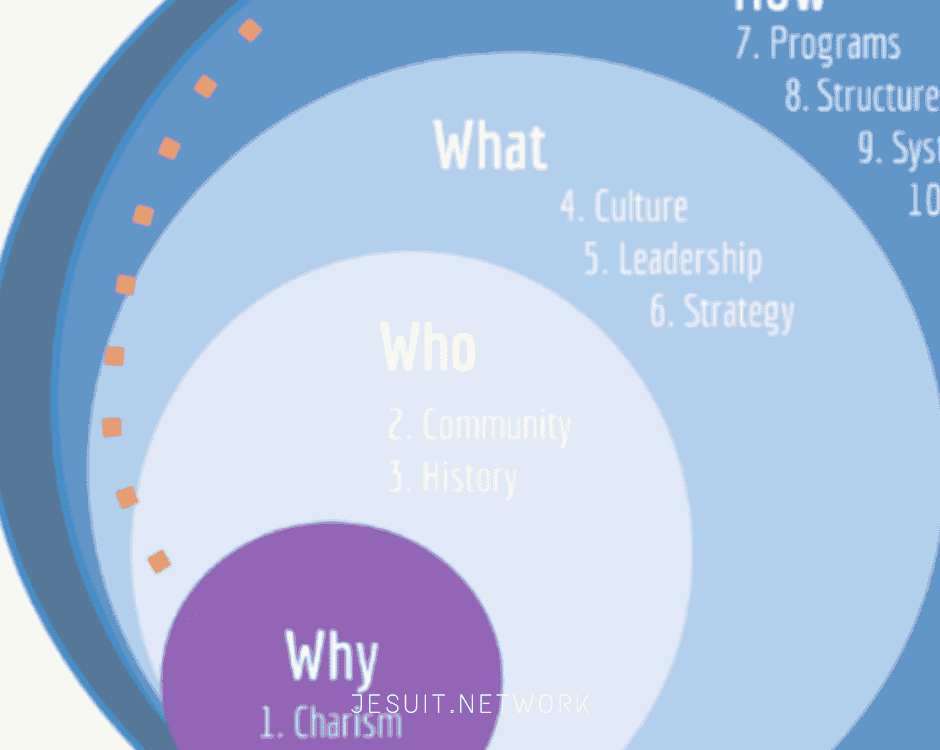This website uses cookies so that we can provide you with the best user experience possible. Cookie information is stored in your browser and performs functions such as recognising you when you return to our website and helping our team to understand which sections of the website you find most interesting and useful.
For many Jesuits is quite a novelty to learn about topics like networking, collaboration, taking advantage of the network. Many of us had looked upon them as a whole new development in social sciences, out of the need of big corporations for better market efficiency as well as academic institutions for a sound management of their own resources, not to mention the opportunities for getting ahead in multiple fields of work.
Such a mindset has become an obstacle to get better results with this way of proceeding. On one hand, many people equate any network and engaging in it with meetings from time to time, with nothing to report at, nothing to expect for, just an stage to showcase the performance, mine or that of my organization, for eventually strengthening my position as president.
Another group of Jesuits have a skeptical eye upon what they feel like an invasion of ways and trades from the modern, corporative world, alien to our spiritual path and our Ignatian way of proceeding, under the guidance of a known truth.
My last fifteen years as Jesuit have been devoted in my province (Colombia), my conference (CPAL), and the General Curia, to work in the revival of one truly Ignatian tradition: gratitude toward our benefactors. Gratitude not limited to Christmas cards or plates with their names on the front of buildings erected out of their generosity. It’s about thanking them with something named by Saint Ignatius as “benefit”. In modern language, it means to share with them “the impact” of their donation —as founder, donor, or regular partner in an action that is being carried out— on any specific community, according to a previous study and a work plan devised to achieve an specific result.
For not going too far in the history of the Society, let me share my first contact with a Jesuit network. When in fourth grade of the elementary school, I was enrolled at the Jesuit school in my city, Bucaramanga. That was sixty years ago. There was a mission office at Bogota, run by a veteran from the mission in China. Upon Mao’s arrival, Colombian missionaries were scattered throughout the Philipines and Taiwan. Later, they were sent to Japan and Congo. Meanwhile at home, we would held meetings with one missionary every year (when getting back to visit his family). The whole school filled the central court to listen him. Afterward, in each grade and classroom, there was a teacher in charge of motivating us to collect stamps, set up raffles, ask our relatives for donations in behalf of the missionaries. That would be done at schools and parishes. Rectors, directors, teachers, students, priests, parishioners, felt like they were part of the support network for the Jesuits at these mission outposts.
This visit was not unforeseen. It was part of a plan: the time of the missionary in Colombia had to coincide with the school year. It was intended for not interfering with other similar activities. Neither the Sodality of Our Lady, the Apostleship of Prayer, the Scouts, the Eucharistic Crusade, nor the heads of the charities at the parish or the school, looked this visit and the fundraising like a competition and a reduction of chances for their own projects. Neither the parish priests nor the rectors perceived a menace to the interest of the work under their responsability if they got involved in this support network for the missionary action of the Province.
The mission offices succeeded in setting up a network of relationships, contacts, information and fundraising in a time with no WhatsApp, electronic transferences, or payment cards. A network involving the houses of formation, the students and alumni, the parishioners and the exercisers, the Jesuits’ relatives, the lay collaborators and the associations of believers.
Times, people and places have changed a lot in these 60 years, but there is one thing I am utterly sure about. Networks have been in the DNA of the Society of Jesus.
It would be a mistake to preserve ways and trades succesful in other contexts—religious, economic, social—, likewise it’s an error to see ourselves like just discovering the networks as a mechanism for potentializing and achieving better results nowadays.
The ability to blend our Ignatian legacy with a better use of available tools to accomplish the mission under the Universal Apostolic Preferences, is the groundwork for the “benefit” of the communities we work with and serve at, anywhere in the Common House.
I conclude with a quote from Saint Ignatius in a letter to Francis Borgia on September 17, 1555. “…it is an error to trust and hope in what I can; likewise it is another error to trust in that everything is done by God Our Lord, without wanting to put from my side all the gifts received.” [MH. T9, 5736. pp. 626-627]
Translation into English by Milagros Rosas Tirado





